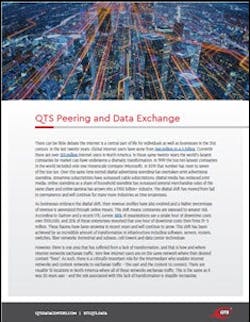There can be little debate the internet is a central part of life for individuals as well as businesses in the 21st century. In 1999 the top ten largest companies in the world included only one hyperscale company (Microsoft). In 2019 that number has risen to seven of the top ten. The digital shift has moved from fad to permanence and will continue for many more industries as time progresses.
As businesses embrace the digital shift, their revenue profiles have also evolved, and a higher percentage of revenue is generated through online means. This shift means companies are exposed to greater risk. This shift has been achieved by an incredible amount of transformation in infrastructure, including software, servers, routers, switches, fiber networks (terrestrial and subsea), cell towers and data center technology.
However, there is one area that has suffered from a lack of transformation, and that is how and where internet networks exchange traffic; very few internet users are on the same network where their desired content “lives”. Therefore, data exchange can be difficult.
A new report from QTS asserts there is a critically important role for the intermediary who enables internet networks and content networks to exchange traffic — the user and the content to connect — enabling data exchange. This new white paper explores how companies like QTS can help the industry proliferate the number of buildings where internet and content networks can exchange traffic and do so in a neutral and open way.
